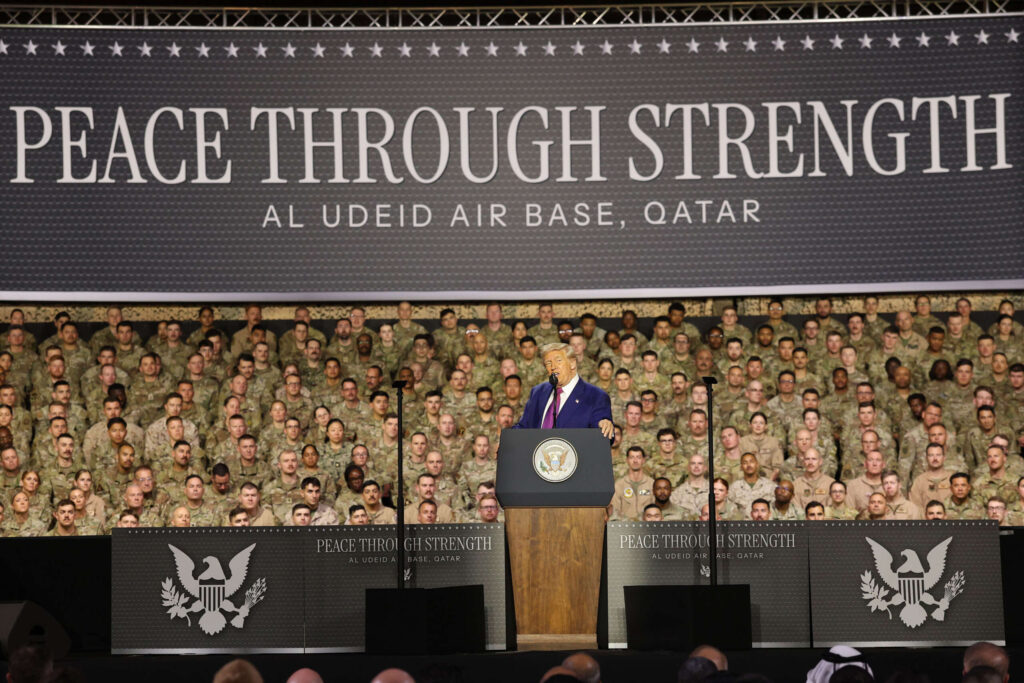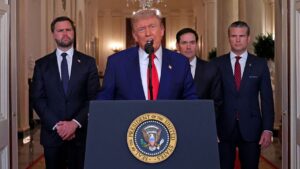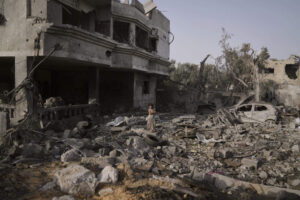
WASHINGTON D.C. – The United States launched a series of strikes on Iranian nuclear facilities, sparking international debate over motives and repercussions.
Breaking: US Conducts Strikes on Iranian Sites
Shortly after former President Donald Trump announced the strikes on Truth Social, Israeli Prime Minister Benjamin Netanyahu addressed the public, praising the action as a demonstration of “peace through strength.” His remarks, however, have been met with criticism from various quarters, accusing the U.S. and Israel of pursuing domination under the guise of security.
Immediate Impact
The strikes targeted three key Iranian nuclear facilities on June 21, causing widespread panic about potential radiation leaks. Human rights organizations have reported significant casualties, with at least 865 Iranians killed in the attacks. The bombings have exacerbated the tense atmosphere in the region, with residents of Tehran being urged to evacuate.
Key Statistic: At least 865 Iranians reported killed following the strikes.
Key Details Emerge
Both the U.S. and Israel have long maintained that Iran’s nuclear program poses a threat, despite intelligence assessments indicating no active weapons development since 2003. Critics argue that the narrative of a nuclear threat is manufactured, pointing to the significant nuclear arsenals of the U.S. and Israel as evidence of hypocrisy.
By the Numbers
- The U.S. possesses over 5,000 nuclear warheads.
- Israel has an estimated 90 nuclear weapons.
- Iran, a signatory of the Treaty on the Non-Proliferation of Nuclear Weapons, has allowed IAEA inspections.
Background Context
The tension between the U.S. and Iran dates back decades, with pivotal events such as the 1953 coup and the Iran-Iraq War shaping the current landscape. The U.S.’s “maximum pressure” campaign and Israel’s aggressive tactics have consistently strained relations, with both nations accused of undermining international norms.
Expert Analysis
Analysts suggest the recent strikes are less about neutralizing a nuclear threat and more about asserting geopolitical dominance. “This is about maintaining control in the region,” said Dr. Emily Thompson, a Middle East policy expert. “The narrative of a nuclear Iran is a convenient cover for broader strategic goals.”
Regional Implications
The attacks have further destabilized an already volatile region. Iran’s allies, including Russia and China, have condemned the strikes, warning of potential retaliatory measures. The international community remains divided, with European leaders calling for restraint while some, like German Chancellor Friedrich Merz, have expressed support for Israel’s actions.
Timeline of Events
- June 21: U.S. strikes on Iranian facilities announced.
- June 22: Netanyahu praises U.S. action.
- June 23: Reports of casualties and damage emerge.
What Comes Next
The situation remains fluid, with diplomatic efforts underway to de-escalate tensions. However, the aggressive posturing by both the U.S. and Israel suggests a prolonged conflict may be on the horizon. As the international community grapples with the implications, the need for a robust antiwar movement becomes increasingly apparent.
The unfolding events highlight the complex interplay of power, politics, and security in the Middle East, leaving many to question the true motives behind the recent actions.






